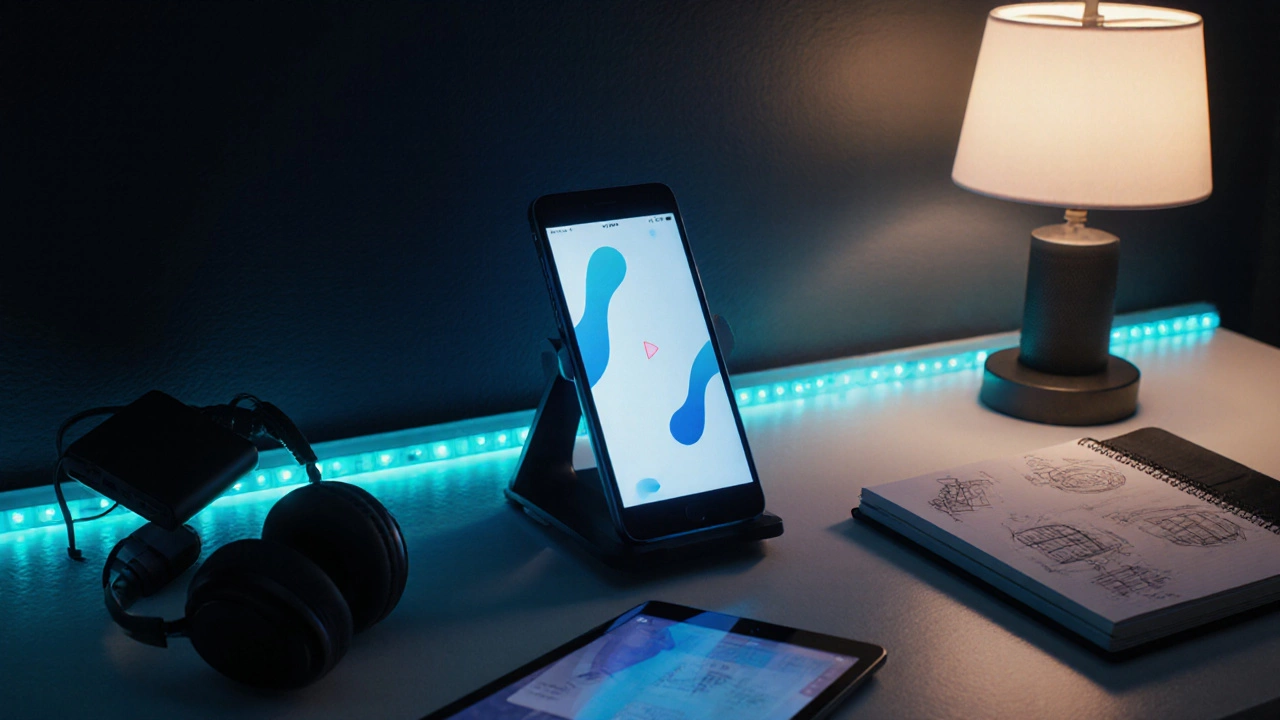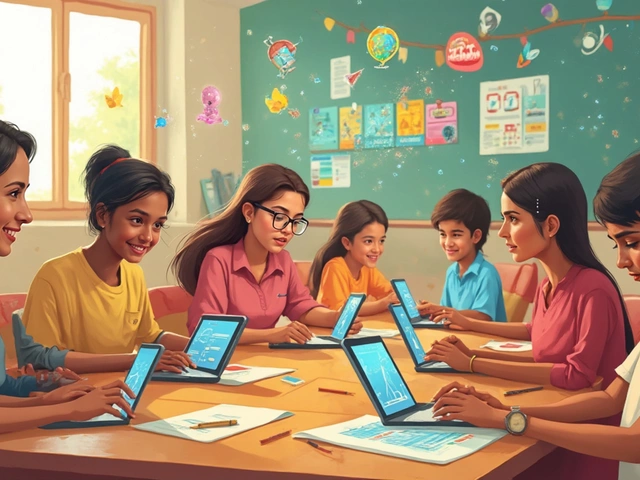Mobile Learning Storage Calculator
The article mentions that a typical 10-hour video course consumes 1-1.5 GB at 720p quality. This calculator helps you estimate storage requirements for your mobile learning courses.
Estimated Storage Needed
0.00 GBWhen people talk about eLearning is a digital education model that delivers courses, certifications, and training over the internet, they often wonder if a smartphone is a handheld device running iOS or Android that connects to the web via cellular or Wi‑Fi can handle the same experience.
Short answer: absolutely, you can. But success depends on the apps you choose, how you set up your device, and a few practical habits. This guide walks you through everything you need to know to turn your phone into a portable classroom.
Why Mobile Learning Matters
Mobile learning, often called mobile learning is a subset of eLearning focused on delivering content through smartphones and tablets, isn’t just a convenience-it solves real problems:
- Time pockets: Commutes, lunch breaks, or waiting rooms become study windows.
- Portability: No laptop, no power outlet, just a device you already carry.
- Personalization: Apps can track progress, adapt difficulty, and push reminders directly to you.
According to a 2024 Global Mobile Learning Report, 68% of learners say they completed at least one course on a phone, and retention rates were 12% higher for short, mobile‑optimized lessons.
Top Mobile eLearning Platforms
Not every platform works equally well on a phone. Below are the most popular services that invest in native iOS and Android apps, offline downloads, and touch‑friendly interfaces.
- Udemy is a marketplace with over 200,000 courses covering tech, business, personal development, and more. Its app lets you download videos, adjust playback speed, and take quizzes without an internet connection.
- Coursera is a platform that partners with universities and companies to offer professional certificates and degree programs. The mobile app supports offline video, PDF reading, and peer‑graded assignments.
- Khan Academy is a non‑profit educational site offering free video lessons and practice exercises, especially strong in K‑12 math and science. Its app caches lessons for offline study and includes a dark mode for night‑time learning.
- Moodle is a open‑source learning management system used by many schools and corporations for custom course delivery. The Moodle app lets you view modules, submit assignments, and receive push notifications from instructors.
Each of these apps works on both iOS is a Apple’s mobile operating system found on iPhones and iPads and Android is a Google’s open mobile OS powering the majority of smartphones worldwide. Below is a quick side‑by‑side comparison.
| App | Offline Video | Certificates | Free Content | Price Range |
|---|---|---|---|---|
| Udemy | Yes | Paid courses only | Limited free courses | $10‑$200 per course |
| Coursera | Yes (select) | Yes (certificates & degrees) | Audit many courses free | Free‑$79/month subscription |
| Khan Academy | Yes | None (non‑certified) | All content free | Free |
| Moodle | Depends on institution | Varies | Varies | Usually free for learners |
How to Get the Most Out of Learning on Your Phone
Having the right app is only half the battle. Follow these habits to make your phone a truly effective study tool.
- Download before you start: Use the offline feature for videos and PDFs to avoid buffering when you’re on a train or in a spotty Wi‑Fi area.
- Set a dedicated study mode: Turn on Do‑Not‑Disturb, lower screen brightness, and use headphones to block distractions.
- Break lessons into bite‑size chunks: Mobile screens are smaller, so aim for 5‑10 minute segments. Many apps let you bookmark where you left off.
- Leverage native note‑taking: Apps like Apple Notes or Google Keep integrate with the OS, letting you capture ideas without leaving the learning app.
- Sync across devices: Most platforms auto‑sync progress, so you can start on your phone and finish on a laptop without losing your place.
Common Pitfalls and How to Avoid Them
Mobile learning is convenient, but a few traps can hurt retention.
- Relying on a single device: Batteries die. Keep a charger or power bank handy for longer sessions.
- Skipping interaction: Passive video watching isn’t enough. Use quizzes, flashcards, or discussion forums built into the app.
- Ignoring ergonomics: Hunching over a phone for long periods can cause neck strain. Use a stand or prop the device at eye level.
- Over‑loading with notifications: Turn off non‑essential app alerts; they disrupt focus and break the flow of learning.

Setting Up Your Device for Optimal Study
Simple tweaks can make a huge difference.
- Enable offline storage: In Settings > Storage, allocate enough space (1‑2 GB per course is typical).
- Adjust video quality: If you’re on limited data, set playback to 480p; most apps allow you to lock this setting.
- Use a good pair of earbuds: Clear audio helps comprehension, especially for language or technical tutorials.
- Install a PDF reader: Some courses provide downloadable PDFs; having a reliable reader (e.g., Adobe Acrobat) ensures smooth scrolling.
With these steps, you’ll be ready to turn any spare moment into a learning opportunity.
Frequently Asked Questions
Can I earn a recognized certificate using only my phone?
Yes. Platforms like Coursera and Udemy issue digital certificates that are viewable and shareable directly from the mobile app. Just make sure the course you enroll in includes a certificate as part of its offering.
Do I need a fast internet connection for mobile eLearning?
Only for the initial download. Once videos, PDFs, or quizzes are saved locally, you can study offline. Streaming high‑definition video does benefit from a stable 4G/5G or Wi‑Fi connection.
Are there privacy concerns when using eLearning apps on my phone?
Most reputable platforms follow GDPR and other data‑protection regulations. Review each app’s privacy policy, limit permissions to only what’s needed (e.g., storage for downloads), and enable two‑factor authentication when available.
Can I use a phone for interactive labs, like coding or design tools?
For basic practice, yes. Apps like GitHub Codespaces is a cloud‑based development environment accessible via mobile browsers let you write code on the go. More intensive tasks (e.g., 3D modeling) still require a laptop or desktop.
How much storage do I need for multiple courses?
A typical video course (10‑hour total) consumes about 1‑1.5 GB at 720p. If you plan to store several courses, aim for at least 10 GB of free space or use an SD card on Android devices.





Write a comment